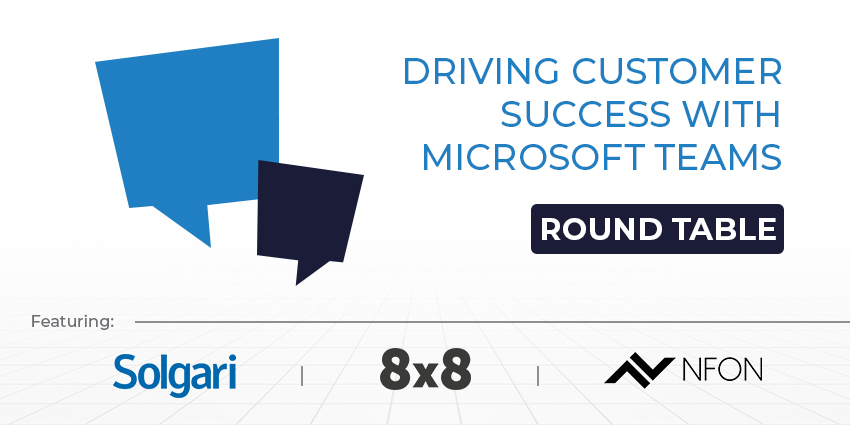The idea that call centers should be rooms filled with agents wearing headsets is outdated. While traditional call centers still exist in some industries, many companies have more “informal” call centers, defined by flexibility and versatility.
These informal call centers may not feature teams of dedicated customer success or service agents, but they still handle various crucial calls and conversations. Like a traditional call center, informal call centers need to be configured to address the specific needs of each company, its customers, and its workforce.
“Many businesses are unaware that they are running an Informal Contact Center. Akixi’s Call Center Reporting solution enables Service Providers to education their customers and open up many new opportunities.”
- Jacob Wardrop, Chief Revenue Officer at Akixi.
While many service providers excel at selling call center solutions to traditional call centers, they often overlook the potential of the informal call center. Here’s your guide to designing informal call centers around Microsoft Teams, for a distributed workforce.
Understanding the Informal Call Center
Most of us are familiar with “formal” or traditional call centers. These are the environments that consist of large groups of agents wearing headsets and answering calls every day. Companies spend thousands, or millions of dollars configuring these call centers with ACD systems, cloud-based call center platforms, reporting, recording, and hardware tools.
The informal call center, however, is becoming more common in the modern workplace. Most companies today say they don’t have a call center at all, but what they really mean is they don’t have a “traditional” call center. This is because informal call centers can be difficult to define.
They might include groups of workers from sales, a service center, or technical support that are all working to address customer inquiries but not to the same volume or intensity as a full contact center. They do, however, require supervisor and agent capabilities, call queuing, and wallboard toolsets, like a traditional call center. They may also need integration with solutions like Microsoft Teams.
The opportunity for service providers here is to deliver a comprehensive solution tailored to the informal contact center. Many companies are still taking direct routing and operator connect services from their service provider, but can’t optimize CX for their customer base, because they lack the right tools. Service Providers can therefore leverage the opportunity to attach these solutions to their Teams PSTN portfolio.
Building an Informal Call Center
Designing informal call centers isn’t the same as distributing standard call center technology to formal companies. Here are some of the steps service providers will need to take, to ensure they’re delivering the right solution to their customers:
1. Identify the presence of an informal call center
The first step is helping customers identify whether they have an informal call center. There are a few questions you can ask here, such as:
- Do you have groups of knowledge workers in your company who regularly handle customer calls t?
- Do you have an unstructured group of workers handling service requests?
- Do you miss important customer calls
- Do you have different staffing levels to mirror call volume trends or seasonality?
If they answer “Yes”, you can begin to identify the tools and technologies missing from the informal call center, that could improve their chances of success. For instance, many UCaaS and telephony solutions only offer basic routing and queuing functionality, leaving gaps in areas like reporting, end-to-end visibility, and proactive notifications.
2. Examine the current informal call center
Once you’ve defined that the customer does have an informal call center, identify the tools their employees are already using to manage it. Commonly, in today’s world, this includes platforms like Microsoft Teams, for collaboration and knowledge sharing.
It might also include a range of other tools, such as cloud telephony solutions connected to Teams, Customer Relationship Management software, and workforce management tools. Identify the tools your customers already have for their call center, then ask:
- Where are the gaps that harm customer experience?
- Which strategies would make the business more productive or efficient?
- Which tools need to be connected (such as CRM apps and Microsoft Teams)
3. Bridge the gaps with advanced tools
Next, you can begin to actively bridge the gaps in the company’s informal call center. For instance, many UCaaS solutions, including Microsoft Teams, are missing essential tools for the informal call center, such as real-time call analytics, call handling and queuing CRM integrations, and call recording systems.
Service providers should strive to deliver:
- Realtime reporting and analytics tools for visibility into call traffic and user activity
- Unlimited-fully customizable reports
- CRM integration with call popping and call search
- Tools for tracking historical performance metrics like call volume and response time
- Dashboards for real-time insights for both agents and supervisors
- Informal agent and supervisor capabilities
One of the best ways to start generating instant results is to focus on analytics and insights. Even in an informal call center, it’s important for businesses to have visibility into the activities of their workers, and the needs of their customers.
Business analytical tools can help organizations to schedule staff more effectively to be available for calls at specific times, and on certain channels. Customer engagement analytics can help informal call centers identify the insights that will help them better serve customers and reduce the risk of missing out on opportunities.
Additionally, integrating CRM solutions into Microsoft Teams will ensure business leaders and employees can access the information they need to deliver more personalized, relevant and memorable experiences to each customer.
4. Find the right partner
Finally, service providers need to find a partner that can help them to implement the right informal call center tools into a company’s landscape. It’s crucial to find a partner that offers access to the right variety of features, like historic and real-time reporting and proactive notifications.
“Akixi’s unique ability to deliver real-time analytics is critical to the success of an informal contact center. Immediate visibility of casual agent performance allows for real-time decision-making, allowing managers to optimize customer service and ensure that casual agents are meeting performance standards efficiently and effectively.”
- John Christian, VP Marketing at Akixi.
A company like Akixi, with its cloud-based solutions built specifically for service providers, allows vendors to transform informal call center operations with:
- Real-time Engagement analytics for more than 250 metrics
- Multiple Real-time charts and graphs on active calls and worker status
- Proactive alerts and notifications
- Instant dashboards for supervisors and agents
- Granular cradle-to-grave insights into customer journeys
Plus, these solutions work natively with Microsoft Teams, bringing all of the insights and technologies businesses need into a single, easily manageable ecosystem.
Discover the Opportunities of the Informal Call Center
As the world of customer service, and the business landscape continues to evolve, service providers have an excellent opportunity to access new market opportunities. Designing and optimizing informal call centers can help to differentiate your business from the competition.
You can offer your customers access to intuitive, innovative solutions that leverage their existing technologies, empower their workforce, and pave the way for better customer experiences.







